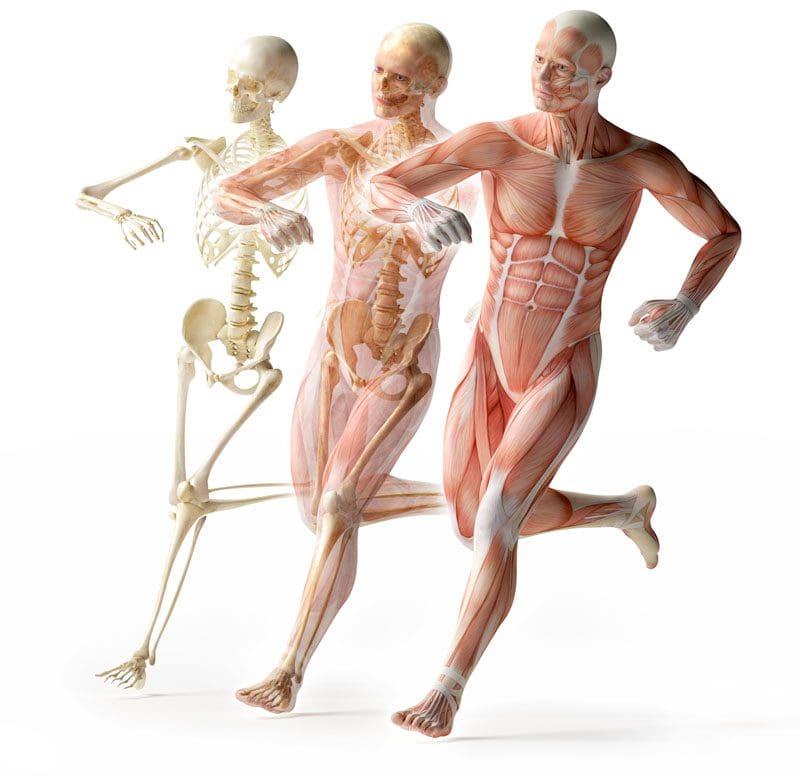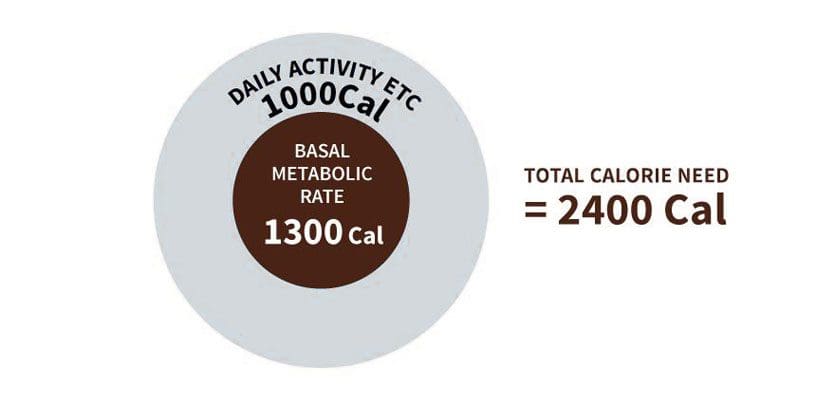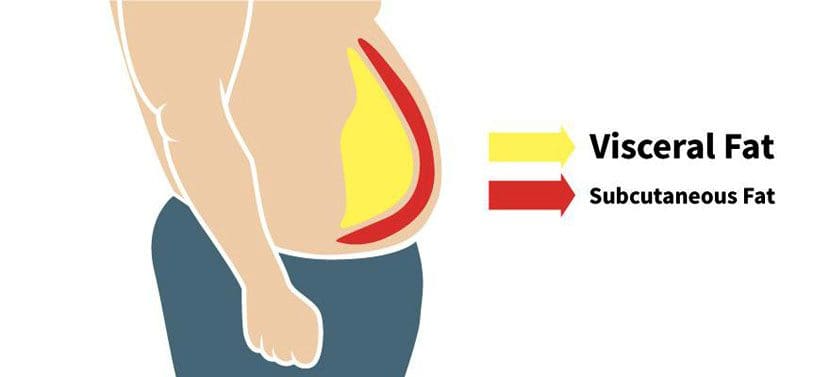
Table of Contents
Guide to Basic Body Composition
Percent Body Fat Body/Fat Percentage
- Percent Body Fat is a reflection of how much of the body’s weight is made up of fat.
- It is calculated by dividing the weight of body fat mass by total weight.
- It helps to track progress whether trying to lose weight or gain muscle.

Takeaway
- This percentage can be applied to set percent body fat ranges.
- The healthy ranges are around 10-20% percent body fat for men and 18-28% for women.
Lean Body Mass/Fat-Free Mass Guide
Lean Body Mass is sometimes used interchangeably with Fat-Free Mass.- Lean Body Mass is the weight of everything in the body that is not fat.
- This includes muscles, organs, bones, and body water.
- Lean Body Mass is not the same as muscle.
- Lean Body Mass is a collection of different types of body tissues that includes muscle.

Takeaway
- Lean Body Mass plus Body Fat Mass make up entire body weight.
- If the Lean Body Mass value is in pounds subtract this number from total body weight to get an approximation of Body Fat Mass.
- Divide this number by body weight, results are percent body fat.
- Lean Body Mass is closely related to the total number of calories the body needs every day.
- The Lean Body Mass forms the core of the body’s metabolism, and this number can be used to help determine unique dietary needs.
- No more basing nutrition off the 2,000-calorie diet. This is a poor one-size-fits-all approach to food intake.
Skeletal Muscle Mass Guide
- Skeletal muscle is one of four major muscle types and governs all the movements that are consciously controlled. Everything from texting to deadlifting a barbell.
- It is the muscle group that grows/builds when exercising.
- Increased Skeletal Muscle Mass translates into increased strength.
- When trying to build up the body and grow in size, this is the value to track and watch increase over time.

- However, muscle is not just for strength.
- Muscle is made up primarily of protein and can act as protein storage.
- When the body is under severe stress like a traumatic injury, the recovery process is triggered and needs added protein, up to four times the amount.
- When the body is not able to get the proper amount of protein from a normal diet, the body begins to get what it needs from the protein storage/muscles.
Basal Metabolic Rate/BMR
- The Basal Metabolic Rate, or BMR, is the number of calories that the body needs to maintain Lean Body Mass. It is a significant component of overall metabolism.
- An individual with more Lean Body Mass will have a higher Basal Metabolic Rate.
- This is the reason why a 250-pound athlete needs to eat more than a 150-pound sedentary adult. Because the athlete has more Lean Body Mass.

- BMR can help make a healthy diet plan designed for fat loss or muscle gain by helping understand how much energy/calories from food the body needs.
- Multiplying the BMR with activity factor will estimate Total Daily Energy Expenditure or TDEE.
- Using the TDEE as a baseline an individual can develop a nutritional plan based on body composition goals.
Body Water Guide
- Body Water includes all the water in the body. This means everything from:
- The water in the blood
- Water in the organs
- The water inside the bones
- Intracellular
- Extracellular
- Intracellular means inside the cells and includes the water in the organs, muscles, composing 2/3 of total body water.
- The remaining 1/3 is extracellular outside the cells and includes the water in the blood.

Takeaway
- When the body is generally healthy it maintains a healthy balance of intracellular to extracellular water with a ratio of around 3:2.
- When the balance becomes unbalanced or falls apart water monitoring becomes important.
- For example, individuals with severe health problems, like kidney ailments/failure, are unable to rid the body of extracellular water. This causes a buildup of water and requires removal through procedures like dialysis.
Dry Lean Mass
- Lean Body Mass includes everything that’s not body fat and includes body water.
- When all the water has been taken out what remains is known as Dry Lean Mass.
Lean Body Mass – Body Water = Dry Lean Mass
- This amounts to the protein content of the muscles and the mineral content of the bones.
- Most Dry Lean Mass will be found in these areas.

Takeaway
- Water monitoring can help track real, physical changes in the body.
- Lean Body Mass contains body water, and body water levels can be influenced by different factors like a recent workout or being low on carbohydrates.
- Changes in body water are considered technical changes in Lean Body Mass.
- When building muscle, the body is actually building new physical protein stores and reflects in Dry Lean Mass.
- An increase in Lean Body Mass can signal muscle growth, or not.
- However, an increase in Dry Lean Mass is a more favorable indicator that there is muscle growth.
Visceral Fat
- Two major categories of body fat.
- Subcutaneous fat is the fat under the skin and is the type that can be seen.
- The second type is called visceral fat.
- This fat collects inside the abdomen and wraps around the internal organs.

Takeaway
- Just because it cannot be seen does not mean it is not there.
- If it is there it is something definitely worth knowing about.
- This is because visceral fat is not just extra pounds but an active organ that secretes harmful hormones into the body that triggers never-ending inflammation.
- The more visceral fat, the greater risk of inflammation.
- Inflammation over time places added stress on the heart that can lead to cardiovascular problems.
Get Tested Today
Hopefully, this guide has clarified some of the common body composition terminology. This is a basic overview designed to provide essential information about body composition and how it applies. A general understanding can help in making healthy lifestyle choices, like deciding to lose weight or dietary adjustments.Body Health
Dr. Alex Jimenez’s Blog Post Disclaimer
The scope of our information is limited to chiropractic, musculoskeletal, physical medicines, wellness, and sensitive health issues and/or functional medicine articles, topics, and discussions. We use functional health & wellness protocols to treat and support care for injuries or disorders of the musculoskeletal system. Our posts, topics, subjects, and insights cover clinical matters, issues, and topics that relate and support directly or indirectly our clinical scope of practice.* Our office has made a reasonable attempt to provide supportive citations and has identified the relevant research study or studies supporting our posts. We also make copies of supporting research studies available to the board and or the public upon request. We understand that we cover matters that require an additional explanation as to how it may assist in a particular care plan or treatment protocol; therefore, to further discuss the subject matter above, please feel free to ask Dr. Alex Jimenez or contact us at 915-850-0900. The provider(s) Licensed in Texas& New Mexico*References
Westerterp, Klaas R. “Exercise, energy balance, and body composition.” European journal of clinical nutrition vol. 72,9 (2018): 1246-1250. doi:10.1038/s41430-018-0180-4 Borga, Magnus et al. “Advanced body composition assessment: from body mass index to body composition profiling.” Journal of investigative medicine: the official publication of the American Federation for Clinical Research vol. 66,5 (2018): 1-9. doi:10.1136/jim-2018-000722Post Disclaimer
Professional Scope of Practice *
The information herein on "Body Composition Terminology Guide" is not intended to replace a one-on-one relationship with a qualified health care professional or licensed physician and is not medical advice. We encourage you to make healthcare decisions based on your research and partnership with a qualified healthcare professional.
Blog Information & Scope Discussions
Welcome to El Paso's Wellness blog, where Dr. Alex Jimenez, DC, FNP-C, a board-certified Family Practice Nurse Practitioner (FNP-C) and Chiropractor (DC), presents insights on how our team is dedicated to holistic healing and personalized care. Our practice aligns with evidence-based treatment protocols inspired by integrative medicine principles, similar to those found on dralexjimenez.com, focusing on restoring health naturally for patients of all ages.
Our areas of chiropractic practice include Wellness & Nutrition, Chronic Pain, Personal Injury, Auto Accident Care, Work Injuries, Back Injury, Low Back Pain, Neck Pain, Migraine Headaches, Sports Injuries, Severe Sciatica, Scoliosis, Complex Herniated Discs, Fibromyalgia, Chronic Pain, Complex Injuries, Stress Management, Functional Medicine Treatments, and in-scope care protocols.
Our information scope is limited to chiropractic, musculoskeletal, physical medicine, wellness, contributing etiological viscerosomatic disturbances within clinical presentations, associated somato-visceral reflex clinical dynamics, subluxation complexes, sensitive health issues, and functional medicine articles, topics, and discussions.
We provide and present clinical collaboration with specialists from various disciplines. Each specialist is governed by their professional scope of practice and their jurisdiction of licensure. We use functional health & wellness protocols to treat and support care for the injuries or disorders of the musculoskeletal system.
Our videos, posts, topics, subjects, and insights cover clinical matters, issues, and topics that relate to and directly or indirectly support our clinical scope of practice.*
Our office has reasonably attempted to provide supportive citations and has identified the relevant research studies or studies supporting our posts. We provide copies of supporting research studies available to regulatory boards and the public upon request.
We understand that we cover matters that require an additional explanation of how they may assist in a particular care plan or treatment protocol; therefore, to discuss the subject matter above further, please feel free to ask Dr. Alex Jimenez, DC, APRN, FNP-BC, or contact us at 915-850-0900.
We are here to help you and your family.
Blessings
Dr. Alex Jimenez DC, MSACP, APRN, FNP-BC*, CCST, IFMCP, CFMP, ATN
email: coach@elpasofunctionalmedicine.com
Licensed as a Doctor of Chiropractic (DC) in Texas & New Mexico*
Texas DC License # TX5807
New Mexico DC License # NM-DC2182
Licensed as a Registered Nurse (RN*) in Texas & Multistate
Texas RN License # 1191402
ANCC FNP-BC: Board Certified Nurse Practitioner*
Compact Status: Multi-State License: Authorized to Practice in 40 States*
Graduate with Honors: ICHS: MSN-FNP (Family Nurse Practitioner Program)
Degree Granted. Master's in Family Practice MSN Diploma (Cum Laude)
Dr. Alex Jimenez, DC, APRN, FNP-BC*, CFMP, IFMCP, ATN, CCST
My Digital Business Card


